#lgbeastasia
Text
Yuasa Yoshiko ( 1896 – 1990)
Was a Russian language scholar and translator of Russian literature in Shōwa period Japan.
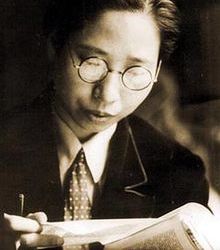
Born in Kyoto, Yuasa was an early supporter of the feminist movement in Japan.
Moving to Tokyo, she was also drawn to leftist political movement and became involved with a leading female proletarian literature movement novelist Chūjō Yuriko.
In 1924, after Chūjō divorced her husband, the two women began to live together, and from 1927–1930, traveled together to the Soviet Union, where they studied the Russian language and literature, and developed a friendship with a noted movie director Sergei Eisenstein.
While Yuasa has also been romantically linked to writer Tamura Toshiko among others, Chūjō is said to have been the love of Yuasa's life.
Yuasa was never again romantically linked to another woman after Chūjō's marriage to proletarian author and Japan Communist Party leader Miyamoto Kenji , although in an interview later in life Yuasa said that the word "lesbian" (rezubian/レズビアン) applied to her.
After their return to Japan and after Chūjō remarried, Yuasa continued with her translation work of Russian authors, especially the works of Maxim Gorky, Anton Chekhov and Samuil Marshak. She is especially known for her translation of Chekhov's The Cherry Orchard. Yuasa died in 1990, and her grave is at Tōkei-ji, a temple in Kamakura.
After her death, the Yasa Yoshiko Prize was established for the best translation of a foreign language stage play into Japanese.
Yuriko,Dasvidaniya is a 2011 drama film, depicting a brief period in 1924. The film is based on two of Yuriko's autobiographical novels, Nobuko and Futatsu no niwa, and on Hitomi Sawabe's non-fiction novel Yuriko, dasvidaniya: Yuasa Yoshiko no seishun.
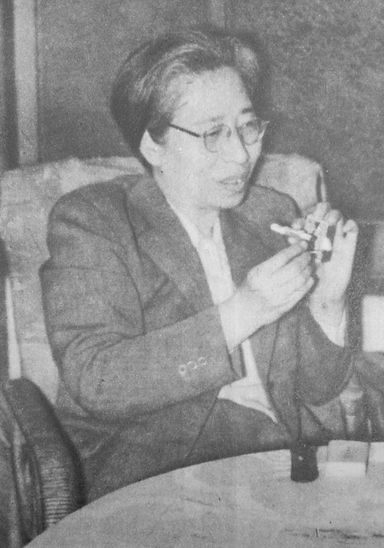
109 notes
·
View notes
Text
Takiko Mizunoe
(20 February 1915 – 16 November 2009)
The first woman to produce films in Japan
She was an actress and a male impersonator,possibly a butch lesbian
One of her best works is "Crazed Fruit" (1956)

In 1928, she enrolled in the training program for the all-female Shochiku Opera Company. There, she was given the stage name Takiko Mizunoe. (Her birth name was Umeko Miura)
Mizunoe cut her hair short, a novelty at the time.This marked the beginning of Mizunoe's signature "cross-dressed fair lady" style, and she became known for her appearances onstage in a silk hat and tuxedo.
at age 18, Mizunoe led one of the Japanese labor movement's few successful actions of the period when she headed a strike of the Shochiku Opera Company's performers in reaction to wage cuts. By that point, Mizunoe had become a star, and news of the "Pink Strike"—so called because it was led by young women in their teens and twenties—spread throughout the media.
The strike lasted for a month, and nearly 50 strikers were arrested, including Mizunoe.But eventually the action was successful, in part because the company could not be seen as exploiting its most popular star, and the company's management offered improved labor conditions and a wage increase for musicians.
She toured northern China, the United States, and Europe, but returned to Japan as the country entered WW2. During the war, Japan imposed restrictions on cross-dressing, which forced Mizunoe to perform in female roles. Touring also became difficult due to restrictions.
Mizunoe never married
She died of natural causes in 2009 at the age of 94

476 notes
·
View notes
Text
Takarazuka Revue
The Takarazuka Revue is a Japanese all-female musical theater troupe based in Takarazuka, Japan. Women play all roles in lavish, Broadway-style productions of Western-style musicals, and sometimes stories adapted from shōjo manga and Japanese folktales.
Founded in 1913 by Ichizō Kobayashi
Part of the novelty of Takarazuka is that all the parts are played by women, based on the original model of Kabuki before 1629 when women were banned from the theater in Japan. The women who play male parts are referred to as otokoyaku '"male role" and those who play female parts are called musumeyaku "girl role".
Before becoming a member of the troupe, a young woman must train for two years in the Takarazuka Music School, one of the most competitive of its kind in the world. Each year, thousands from all over Japan audition. The 40 to 50 who are accepted are trained in music, dance, and acting, and are given seven-year contracts.
The first year, all women train together before being divided by the faculty and the current troupe members into otokoyaku and musumeyaku at the end of the year. Those playing otokoyaku cut their hair short, take on a more masculine role in the classroom, and speak in the masculine form.
While on the surface it would appear that the Takarazuka Revue was intended to grant Japanese women freedom from social oppression, ironically, it began as quite the opposite.
Although Takarazuka embodies Shiraishi’s idea that the actresses become "good wives and wise mothers" upon leaving the company, it also simultaneously represents progressive feminist points of view.
Some believe that its appeal to the female audience is on account of the perceived link to freedom from traditional Japanese society’s imposed ideas of gender and sexuality. So while Takarazuka reinforces the status quo and sublimates women's desires through its dreamy narratives, there remains some possibility that certain spectators find it empowering simply to watch women play men.

Some otokoyaku feel uncomfortable switching to female roles. Otokoyaku Matsu Akira, who retired in 1982, stated: "Even though I am a female, the thing called 'female' just won't emerge at all."
Women make up the primary audience of Takarazuka; in fact, some estimates say the audience is 90 percent female.
There exist two primary theories as to what draws these women to Takarazuka. These theories, put forward by Western scholars, complement each other, drawing on the traditional homoerotic elements of Japanese performing arts, and the ancient subversive nature of the feminine in Japan.
One is that the women are drawn to its inherent lesbian overtones. One author states, "It was not masculine sexuality which attracted the Japanese girl audience but it was feminine eroticism".
Another theory is that the girls are not drawn to the implicit sexuality of Takarazuka, but instead are fascinated by the otokoyaku (the women who play male roles) "getting away with a male performance of power and freedom".
Favoring the first theory, American Jennifer Robertson observes that lesbian themes occur in every Takarazuka performance, simply by virtue of the fact that women play every role. The audience clearly picks up on it and responds. Within the first ten years of Takarazuka's founding, the audience was vocally responding to the apparent lesbianism. Female fans wrote love letters to the otokoyaku.
The other theory, supported by Canadian Erica Abbit is that the female audience of Takarazuka is drawn not exclusively by lesbian overtones, but rather by the subversion of stereotypical gender roles. Japan is a society notorious for its rigid conception of gender roles. The otokoyaku must act the way men are supposed to act. While not denying the presence of lesbian overtones within Takarazuka, Abbitt proposes the cause for the largely female audience has more to do with this subversion of societal norms than sexual ones.
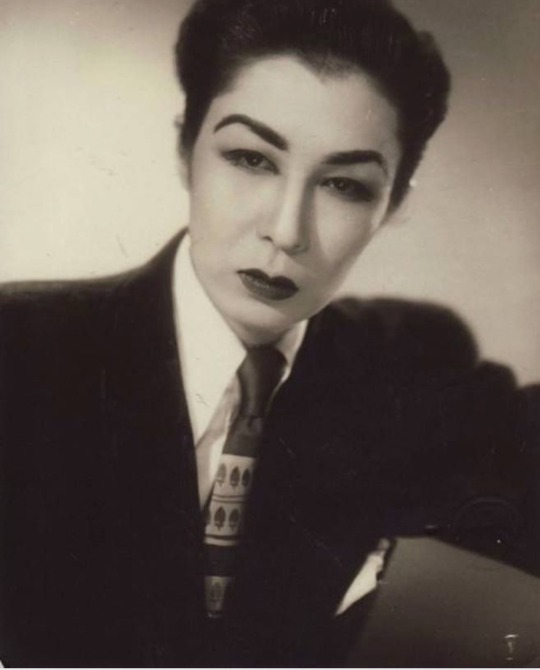
After the scandal of women writing love letters to the otokoyaku and the revelation of an actual lesbian relationship between a otokoyaku and a musumeyaku,the revue greatly limited itself in order to do away with the lesbian image. There was another scandal in 1932 when, for the first time, one of the otokoyaku cut her hair short (previously all of the actresses had their hair long and the otokoyaku simply hid their hair under hats). In August 1940, the actresses were even forbidden to answer faan mail and socialize with their admirers. In the years since then, the regulations have relaxed but not by much.
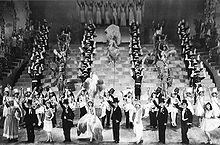

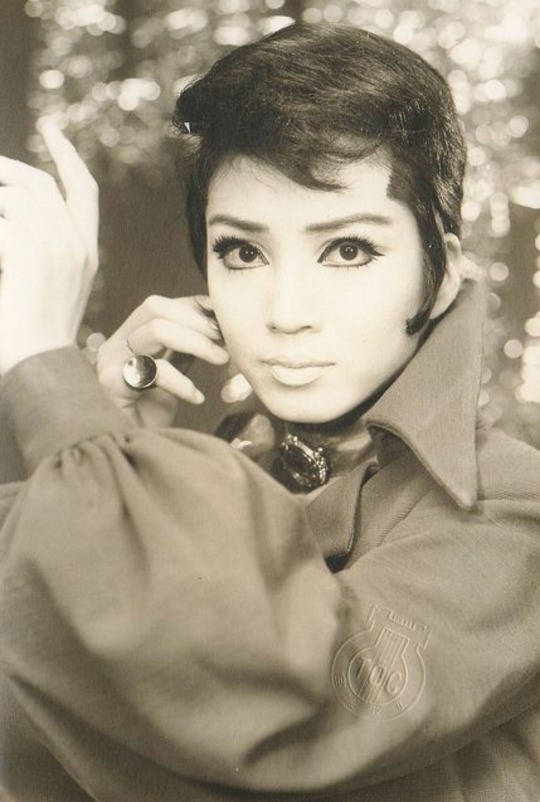
57 notes
·
View notes